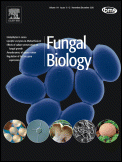 | |
| Discipline | Mycology |
|---|---|
| Language | English |
| Edited by | Simon Avery, Geoff Gadd, Nicholas Money [1] |
| Publication details | |
Former name(s) | Mycological Research, Transactions of the British Mycological Society |
| History | 1896–present |
| Publisher | |
| Frequency | Monthly |
| 2.910 (2021) | |
| Standard abbreviations | |
| ISO 4 | Fungal Biol. |
| Indexing | |
Fungal Biology | |
| ISSN | 1878-6146 |
| OCLC no. | 506264346 |
Mycological Research | |
| ISSN | 0953-7562 |
Transactions of the British Mycological Society | |
| ISSN | 0007-1536 |
| Links | |
Fungal Biology is a scientific journal that publishes peer-reviewed papers on all aspects of basic and applied research of the fungi, including lichens, yeasts, oomycetes, and slime moulds. [2] A publication of the British Mycological Society, it was founded in 1896 as Transactions of the British Mycological Society (1896–1989) and was later titled Mycological Research (1989–2010). The founding editor was Carleton Rea (1896–1930). [3]